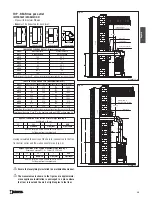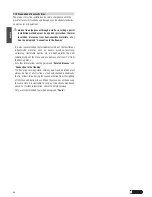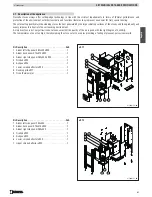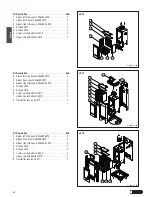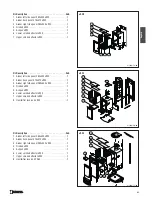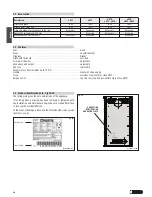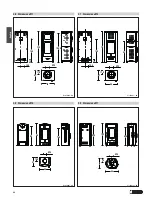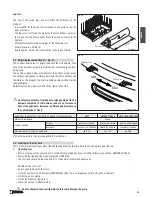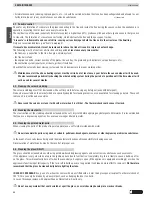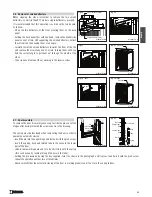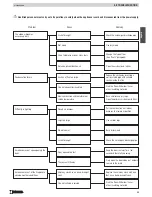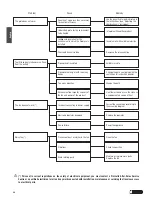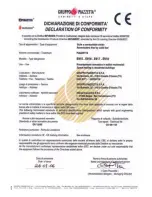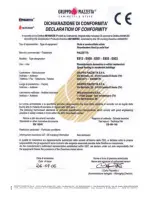
52
English
4.0 MAINTENANCE
4.1 Periodic control
Check for any formation of creosote in the pipes connecting to the flue and inside the flue during the seasons when the appliance is in
operation, inspecting them at least once every two months.
The combustion of the wood (especially if moisture content is higher than 30%) produces pitch and other organic vapours that give rise
to creosote. The formation of creosote causes fouling, which obstructs the flue and the passage of smoke.
“Creosote” is inflammable and can catch fire, causing serious damage to both the flue and to the structure of the dwelling.
Only use recommended fuels (see “Fuels” paragraph).
If creosote has accumulated, it must be removed to reduce the risk of fire and to improve heat exchange.
The following must be free from obstruction and inspected
at least once every two months:
- the flueways (connection to the flue, flue pipe, chimney stack);
- the fresh air intake;
- the appliance hearth (correct position of the plates, the ash tray, the grate and grid, deflectors, smoke dampers, etc);
- the ventilation system (apertures, air ducts, grilles) if installed.
Check that the automatic door closing system and the air dampers are in proper working order.
Maintenance of all the above heating system must be carried out at least once a year before the season when it will be used.
We also recommend periodically checking the whole heating system during the period of operation until the time when it will
not be used for several months.
4.2 Cleaning the ceramic cladding
The ceramic cladding must first be cleaned with a soft dry cloth before using any detergent (even mild detergent).
Products are available on the market which are specially adapted for cleaning ceramics, or concentrated for cleaning porcelain. These will
remove oil, ink, coffee and wine stains.
Never soak the ceramic or clean it with cold water when it is still hot - The thermal shock could cause it to crack.
4.3 Cleaning the steel parts
The steel sections of the cladding should be cleaned with a soft, dry cloth before applying any detergents. Afterwards it is recommended
that you use a degreasing agent such as acetone or vinegar diluted in water.
4.4 Cleaning the painted metal parts
When cleaning the parts of the product in painted metal use a soft cloth moistened with water.
Never clean metallic parts using alcohol, solvents, petroleum-based agents, acetones or other degreasing or abrasive substances.
In the event of such substances being used the manufacturer declines all responsibility for damage caused.
Discolouration of metallic parts may be the result of improper use.
4.5 Cleaning the glass (DAILY)
The glass should be cleaned when cold using ammonia-based degreasing agents and not corrosive substances such as solvents.
If the appliance is very slow to heat up in the ignition phase due to fuel that isn’t completely dry, this is likely to cause a build-up of tar
on the glass. This will eventually burn off when the secondary air supply is open (if the appliance is equipped accordingly) or when the
appliance is functioning at full capacity. If the tar is left to build up over a long period it will require more effort to remove it.
We therefore
recommend that the glass be cleaned daily before lighting the stove.
IN CASE OF BREAKAGE:
Every one of our hearths comes with a door fitted with a 4 mm thick glass panel resistant to a thermal shock of
750°C. This can only be broken by a heavy impact, such as banging the door too hard.
In case of breakage replace with original Gruppo Piazzetta S.p.A parts only.
Do not use any material that could scratch or spoil the glass, as scratches may develop into cracks or breaks.
• All maintenance work (cleaning, replacing parts, etc…) should be carried out when the stove has been extinguished and allowed to cool.
Furthermore, do not in any circumstances use abrasive substances.
DT2010057-00
DT2010463-00


